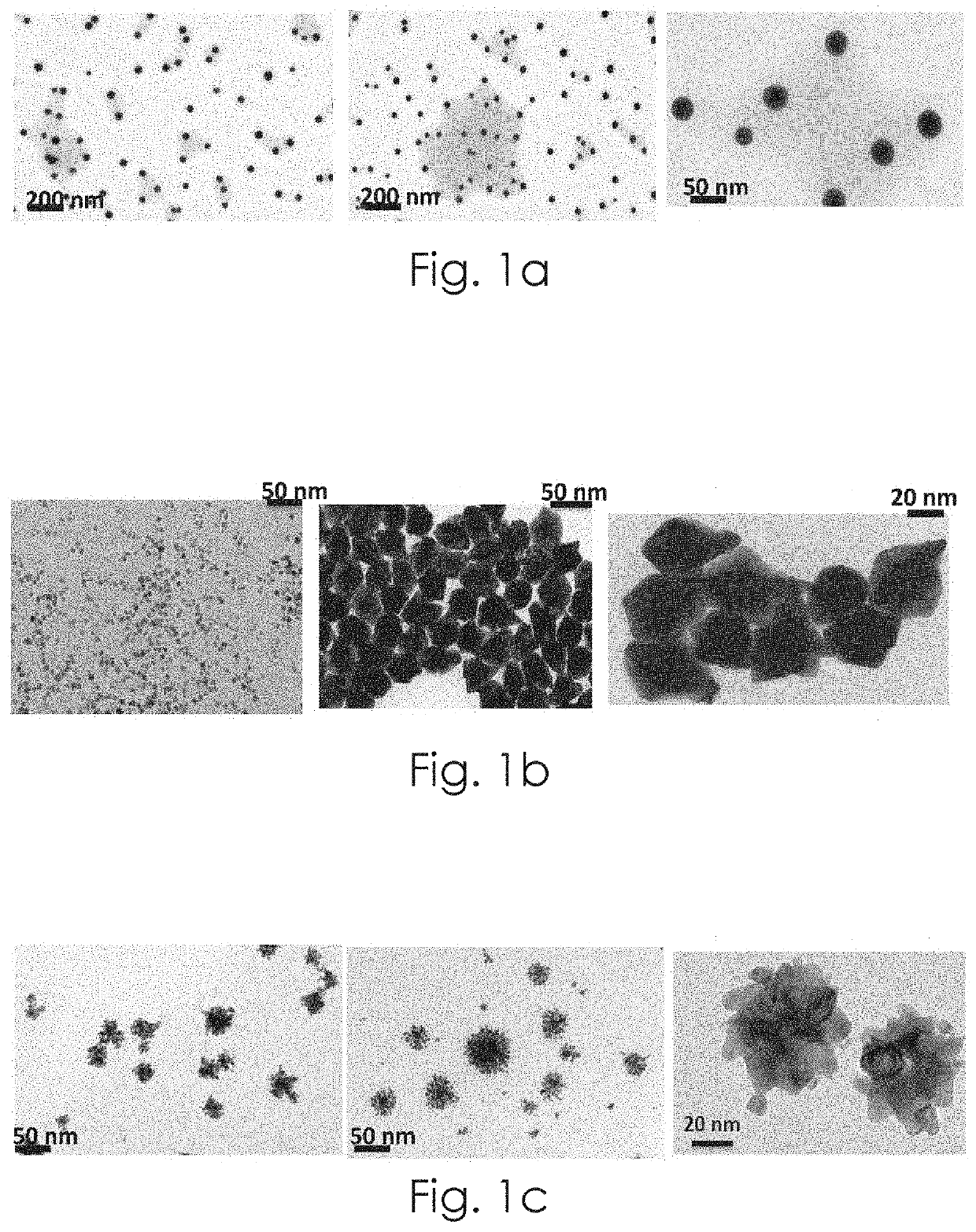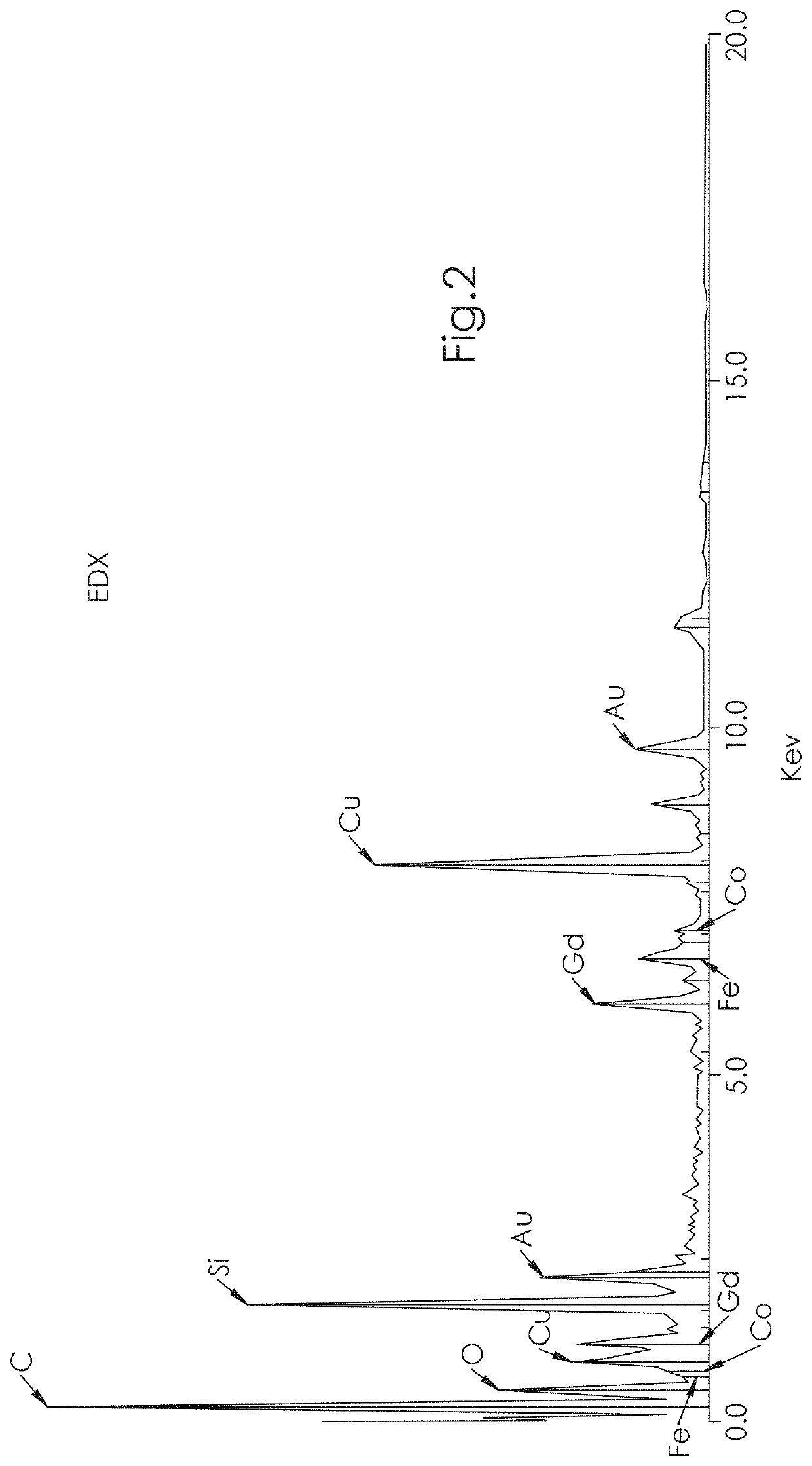Nanomaterial and method of production of a nanomaterial for medical applications, such as MRI or sers
a nanomaterial and nanotechnology, applied in the field of nanomaterials, can solve the problems of toxicity, limited surface gd, and inability to use gadolinium and the ligand alone, and achieve the effect of large size and selective reaction
- Summary
- Abstract
- Description
- Claims
- Application Information
AI Technical Summary
Benefits of technology
Problems solved by technology
Method used
Image
Examples
first embodiment
[0214]In one first embodiment, the gold ions and the metal ions are put together (resulting solution), and ten minutes after the polymer is added in the resulting solution.
second embodiment
[0215]In a second embodiment, the gold ions and polymer are put together (resulting solution), and ten minutes after the metal ions are added in the resulting solution. These fast steps can be realized consecutively in the same receptacle.
[0216]Photothermia Properties
[0217]Photothermia Experiments
[0218]A 660 nm laser diode is focused on the cells and the gold nanoparticles using a 80× objective (numerical aperture=0.75) for 10 s using the optical microscope of an Xplora Raman microspectrometer (Horiba Scientifics) with a laser irradiation of 2.2 mW / μm2.
[0219]Cell Treatment
[0220]Miapaca-2 cells (pancreatic cells) were exposed to a series of Gd-AuNPs dilutions in complete media (concentrations ranging from 0 to 17 μM of nano) for 48 h in 12 well plates. Untreated cells were also included in the experimental design. The cell were then washed, detached from the well using Trypsin-EDTA (0.25%) and resuspended in complete media. A staining with propidium iodide was added to the cell suspe...
PUM
| Property | Measurement | Unit |
|---|---|---|
| Time | aaaaa | aaaaa |
| Temperature | aaaaa | aaaaa |
| Sensitivity | aaaaa | aaaaa |
Abstract
Description
Claims
Application Information
 Login to View More
Login to View More - R&D
- Intellectual Property
- Life Sciences
- Materials
- Tech Scout
- Unparalleled Data Quality
- Higher Quality Content
- 60% Fewer Hallucinations
Browse by: Latest US Patents, China's latest patents, Technical Efficacy Thesaurus, Application Domain, Technology Topic, Popular Technical Reports.
© 2025 PatSnap. All rights reserved.Legal|Privacy policy|Modern Slavery Act Transparency Statement|Sitemap|About US| Contact US: help@patsnap.com



